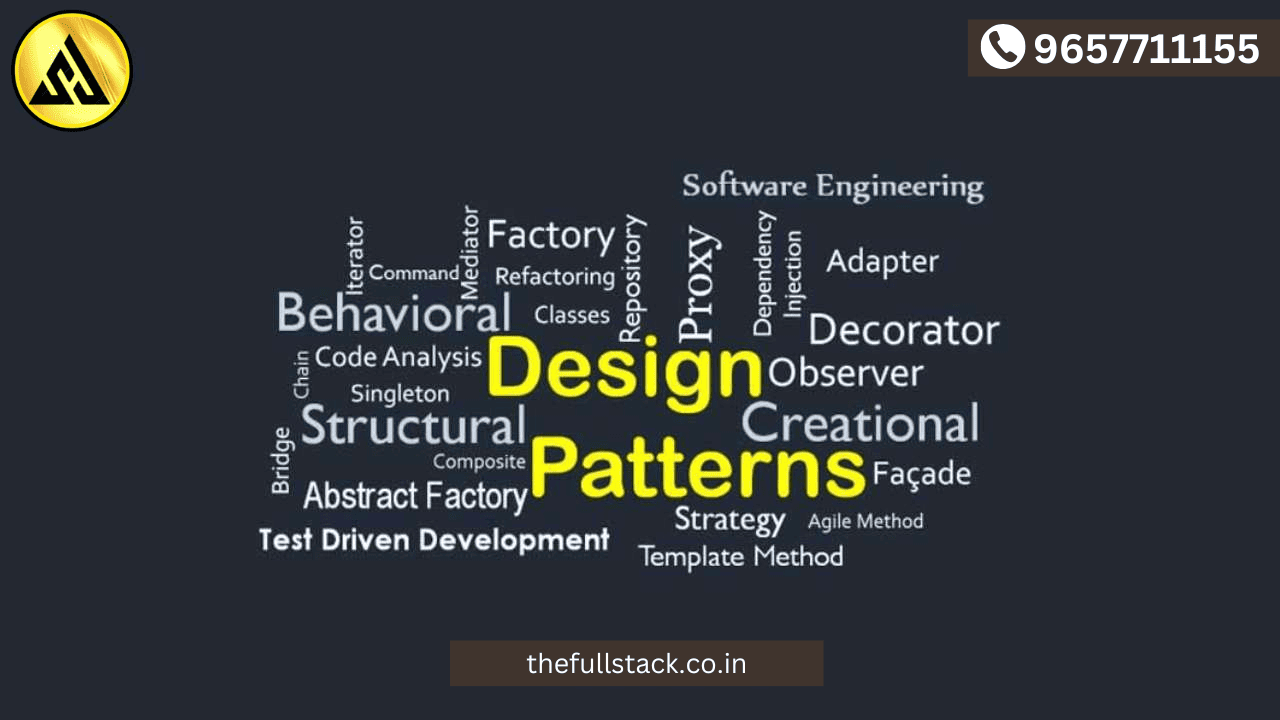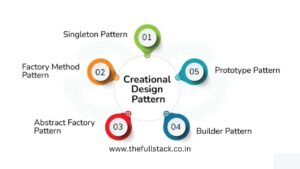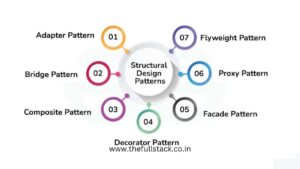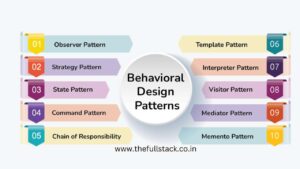
Software Design Patterns Tutorial
Software design patterns are useful tools for developers because they offer tried-and-true fixes for typical issues that arise during the software development process. This post will serve as a guide to help you comprehend the idea of design patterns. By comprehending and using these patterns, developers can produce software systems that are more reliable, manageable, and scalable.
What are Design Patterns?
Design patterns are reusable answers to common software design problems. These best practices are used by skilled object-oriented software engineers to create code that is more organized, controllable, and scalable. Design patterns provide a standard terminology and are specific to particular scenarios and problems. Design patterns are not finished code but templates or blueprints only.
Key Characteristics of Design Patterns
- Reusability: Patterns can be applied to different projects and problems, saving time and effort in solving similar issues.
- Standardization: They provide a shared language and understanding among developers, helping in communication and collaboration.
- Efficiency: By using these popular patterns, developers can avoid finding the solution to same recurring problems, which leads to faster development.
- Flexibility: Patterns are abstract solutions/templates that can be adapted to fit various scenarios and requirements.
Why Learn Design Patterns?
There are multiple reasons to learn design patterns:
- Code that is simpler to comprehend, update, and expand is produced with the help of design patterns.
- They offer solutions that have been tried and tested as well as best practices.
- Learning this enables them to quickly and effectively address similar challenges in various projects.
- Developers can produce reusable components that can be utilized in a variety of applications by implementing design patterns.
- This reduces redundancy and saves development time.
There are three types of Design Patterns:
- Creational Design Pattern
- Structural Design Pattern
- Behavioral Design Pattern
1. Creational Design Patterns
Creational Design Patterns focus on the process of object creation or problems related to object creation. They help in making a system independent of how its objects are created, composed and represented.

Types of Creational Design Patterns:
- Factory Method Design Pattern
- This pattern is typically helpful when it’s necessary to separate the construction of an object from its implementation.
- With the use of this design pattern, objects can be produced without having to define the exact class of object to be created.
- Abstract Factory Method Design Pattern
- Abstract Factory pattern is almost similar to Factory Pattern and is considered as another layer of abstraction over factory pattern.
- Abstract Factory patterns work around a super-factory which creates other factories.
- Singleton Method Design Pattern
- Of all, the Singleton Design pattern is the most straightforward to understand.
- It guarantees that a class has just one instance and offers a way to access it globally.
- Prototype Method Design Pattern
- Prototype allows us to hide the complexity of making new instances from the client.
- The concept is to copy an existing object rather than creating a new instance from scratch, something that may include costly operations.
- Builder Method Design Pattern
- To “Separate the construction of a complex object from its representation so that the same construction process can create different representations.” Builder pattern is used
- It helps in constructing a complex object step by step and the final step will return the object.
2. Structural Design Patterns
Structural Design Patterns address issues with the composition and assembly of classes and objects to create more expansive structures that are effective and adaptable. Inheritance is used by structural class patterns to create interfaces or implementations.

Types of Structural Design Patterns:
- Adapter Method Design Pattern
- The adapter pattern convert the interface of a class into another interface clients expect.
- Adapter lets classes work together that couldn’t otherwise because of incompatible interfaces.
- Bridge Method Design Pattern
- The bridge pattern allows the Abstraction and the Implementation to be developed independently.
- The client code can access only the Abstraction part without being concerned about the Implementation part.
- Composite Method Design Pattern
- As a partitioning design pattern, the composite pattern characterizes a collection of items that are handled the same way as a single instance of the same type of object.
- The intent of a composite is to “compose” objects into tree structures to represent part-whole hierarchies.
- Decorator Method Design Pattern
- It allows us to dynamically add functionality and behavior to an object without affecting the behavior of other existing objects within the same class.
- We use inheritance to extend the behavior of the class. This takes place at compile-time, and all the instances of that class get the extended behavior.
- Facade Method Design Pattern
- Facade Method Design Pattern provides a unified interface to a set of interfaces in a subsystem.
- Facade defines a high-level interface that makes the subsystem easier to use.
- Flyweight Method Design Pattern
- This pattern provides ways to decrease object count thus improving application required objects structure.
- Flyweight pattern is used when we need to create a large number of similar objects.
- Proxy Method Design Pattern
- Proxy means ‘in place of’, representing’ or ‘in place of’ or ‘on behalf of’ are literal meanings of proxy and that directly explains Proxy Design Pattern.
- Proxies are also called surrogates, handles, and wrappers. They are closely related in structure, but not purpose, to Adapters and Decorators.
3. Behavioral Design Patterns
Algorithms and the distribution of duties among objects are the focus of behavioral patterns. In addition to describing patterns of objects or classes, behavioral patterns also explain patterns of communication between them. Complex control flows that are challenging to understand at runtime are characterized by these patterns.

Types of Behavioral Design Patterns:
- Chain Of Responsibility Method Design Pattern
- Chain of responsibility pattern is used to achieve loose coupling in software design where a request from the client is passed to a chain of objects to process them.
- Later, the object in the chain will decide themselves who will be processing the request and whether the request is required to be sent to the next object in the chain or not.
- Command Method Design Pattern
- A behavioral design pattern called the Command Pattern transforms a request into an independent object with all of the information’s request
- This object can be passed around, stored, and executed at a later time.
- Interpreter Method Design Pattern
- Interpreter pattern is used to defines a grammatical representation for a language and provides an interpreter to deal with this grammar.
- Mediator Method Design Pattern
- It enables decoupling of objects by introducing a layer in between so that the interaction between objects happen via the layer.
- Memento Method Design Patterns
- It is used to return an object’s state to its initial state.
- You might wish to create checkpoints in your application and return to them at a later time when it develops.
- Observer Method Design Pattern
- It establishes a one-to-many dependency between objects, meaning that all of the dependents (observers) of the subject are immediately updated and notified when the subject changes.
- State Method Design Pattern
- When an object modifies its behavior according to its internal state, the state design pattern is applied.
- If we have to change the behavior of an object based on its state, we can have a state variable in the Object and use the if-else condition block to perform different actions based on the state.
- Strategy Method Design Pattern
- It is possible to select an object’s behavior at runtime by utilizing the Strategy Design Pattern.
- Encapsulating a family of algorithms into distinct classes that each implement a common interface is the foundation of the Strategy pattern.
- Template Method Design Pattern
- The template method design pattern defines an algorithm as a collection of skeleton operations, with the child classes handling the implementation of the specifics.
- The parent class maintains the overall structure and flow of the algorithm.
- Visitor Method Design Pattern
- It is used when we have to perform an operation on a group of similar kind of Objects. With the help of visitor pattern, we can move the operational logic from the objects to another class.
Design Patterns in Different Languages
Frequently Asked Questions About Software Design Patterns
Q 1. How do design patterns differ from algorithms?
Design patterns focus on solving recurring design problems at the architectural or structural level, emphasizing the organization of code. Algorithms, on the other hand, are step-by-step procedures for solving specific problems at the computational level.
Q 2. Are design patterns language-specific?
No, design patterns are not tied to a specific programming language. They are conceptual solutions that can be implemented in various languages. However, the syntax and implementation details may vary.
Q 3. What’s the difference between a design pattern and an anti-pattern?
Design patterns are proven solutions to common problems, promoting best practices. In contrast, anti-patterns are common pitfalls or bad practices that can lead to poor software design and should be avoided.
Q 4. How do design patterns differ from architectural patterns?
Design patterns address specific design issues at a lower level, focusing on object creation, composition, and interaction. Architectural patterns, on the other hand, deal with higher-level structures of an entire application or system.
you may be interested in this blog here:-
Advanced OOP Concepts in SAP ABAP A Comprehensive Guide
Salesforce Developer Salary in India An In-Depth Analysis
SAP MM Consultant resume 3 years experience


Leave a Reply